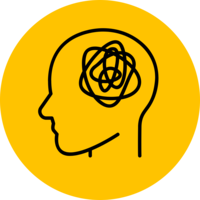Young Lives Peru
Young Lives Peru is a mixed-methods study focused on understanding the causes and consequences of poverty. In 2002, the study recruited two cohorts of children: the Younger Cohort (approximately 2,000 children aged 6-18 months) and the Older Cohort (around 700 children aged 7-8 years). The study conducts follow-ups every three to four years.
Study design
Cohort - accelerated, Cohort - birth
Number of participants at first data collection
2,052 (younger cohort participants)
714 (older cohort participants)
Age at first data collection
6 - 18 months (younger cohort participants)
7 - 8 years (older cohort participants)
Participant year of birth
2001 - 2002 (younger cohort participants)
1994 - 1995 (older cohort participants)
Participant sex
All
Representative sample at baseline?
No
Sample features
Country
Year of first data collection
2002
Primary Institutions
Instituto de Investigación Nutricional (INN)
Group for the Analysis of Development (Grupo de Análisis para el Desarrollo, GRADE)
University of Oxford
Profile paper DOI
Funders
Bernard van Leer Foundation
Department for International Development (DFID) now known as Foreign, Commonwealth & Development Office (FCDO)
Echidna Giving
Economic and Social Research Council (ESRC)
Foreign, Commonwealth & Development Office (FCDO)
Ongoing?
Yes
Data types collected



- Activity log (e.g. food, sleep, exercise)
- Computer, paper or task testing (e.g. cognitive testing, theory of mind doll task, attention computer tasks)
- Interview – face-to-face
- Interview – phone
- Physical or biological assessment (e.g. blood, saliva, gait, grip strength, anthropometry)
- Secondary data
- Self-completed questionnaire – unspecified
- Creative, arts-based and visual methods
- Ethnography or participant observation
- Interviews or focus groups
- None
- Geographic, spatial & environmental data
- Tax, income & benefit data
Engagement
Keywords
Consortia and dataset groups



